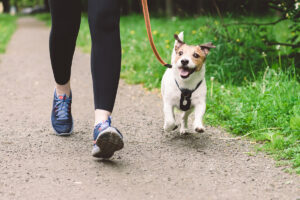
Patellar luxation is a pretty common issue found in dogs.
Patellar luxation, a common orthopedic issue in dogs, affects their quality of life and mobility. It occurs when the patella, or kneecap, travels from its normal position, leading to discomfort and difficulty in movement. Understanding this condition is crucial for dog owners to recognize symptoms early and seek appropriate treatment.
What is Patellar Luxation?
Patellar luxation, also known as “trick knee” or “floating kneecap,” occurs when the patella moves out of its groove in the femur. This displacement can be partial or complete, causing varying degrees of discomfort and lameness in affected dogs. The severity of the condition can range from occasional episodes of lameness to persistent disability. Most commonly medial (towards the inside of the leg), patellar luxation is graded I-IV based on severity. Surgical correction is typically indicated with the progression of symptoms.
Causes
Several factors contribute to patellar luxation in dogs, including genetic predisposition, congenital abnormalities, trauma, and muscle weakness. In some cases, improper alignment of the bones in the hind limbs can also increase the risk of patellar luxation. Small breed dogs are particularly prone to this condition due to their anatomical differences and genetic predisposition.
Breeds Commonly Affected
While patellar luxation can occur in any breed, certain breeds are more predisposed to this condition. These include:
- Toy and Small Breeds: Toy and small dog breeds such as Chihuahuas, Pomeranians, Yorkshire Terriers, and Pekingese are frequently affected by patellar luxation.
- Miniature and Toy Poodles: These breeds are known to have a higher incidence of patellar luxation, often due to genetic factors.
- Cavalier King Charles Spaniel: This breed is also prone to patellar luxation, particularly in its more severe forms.
- Shih Tzus: Shih Tzus are commonly affected by patellar luxation, with genetics playing a significant role in their susceptibility to the condition.
Surgical Treatment Options
When conservative management fails to alleviate symptoms, or in cases of severe patellar luxation, surgical intervention may be necessary. The goal of surgery is to realign the patella and stabilize the knee joint, thereby reducing pain and improving mobility. Several surgical techniques are commonly employed to correct patellar luxation:
- Medial Patellar Luxation Correction: This procedure involves deepening the groove in the femur to better accommodate the patella and prevent it from slipping out of place. Additionally, soft tissue adjustments may be made to stabilize the knee joint.
- Tibial Tuberosity Transposition (TTT): TTT is a surgical technique that involves realigning the attachment of the patellar ligament to the tibia. By moving the tibial tuberosity to a more anatomically correct position, this procedure helps to stabilize the patella and improve joint function.
- Lateral Release: Lateral release surgery aims to release tight structures on the outside of the knee joint, allowing the patella to move more freely and reducing the risk of dislocation.
- Trochleoplasty: In cases where the groove in the femur is shallow or malformed, trochleoplasty may be performed to deepen the groove and provide better support for the patella.
Trust Maryland Veterinary Surgical Services With Your Companion’s Health
Your companion’s health is important, and the team at MVSS is ready to provide the best care possible for your furry family. We are dedicated to combining comprehensive exams and assessments with informative and honest discussions of your companion’s care. Once we have worked with you to decide on the best course of action for your dog, our professionals will use their surgical expertise to work towards the goal of giving your companion an active and pain-free life. We are proud to serve loyal companions in Catonsville and Baltimore. To learn more about our services, give us a call at 410-788-4088 or visit us online. For more information and tips for pet health, follow us on Facebook and Pinterest.
